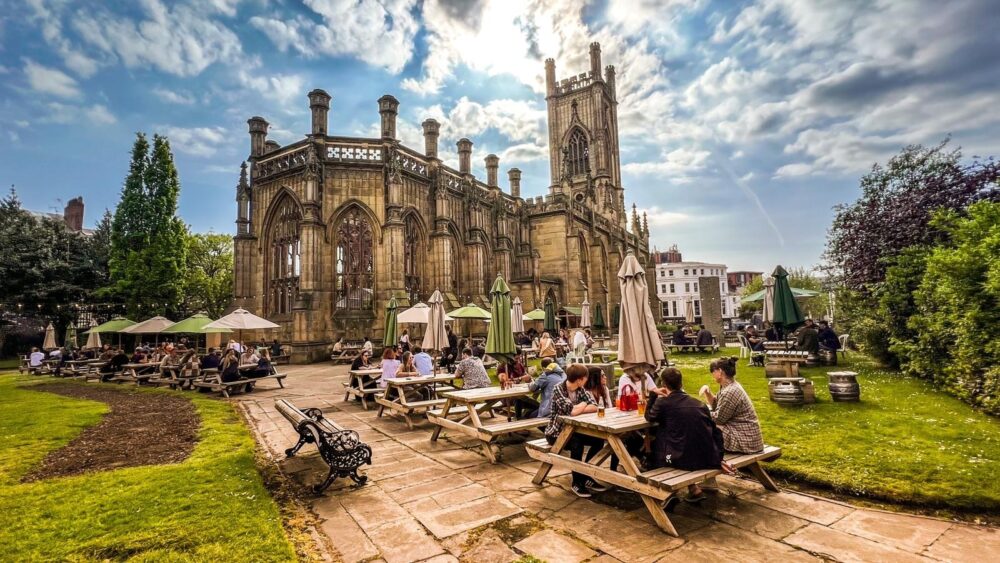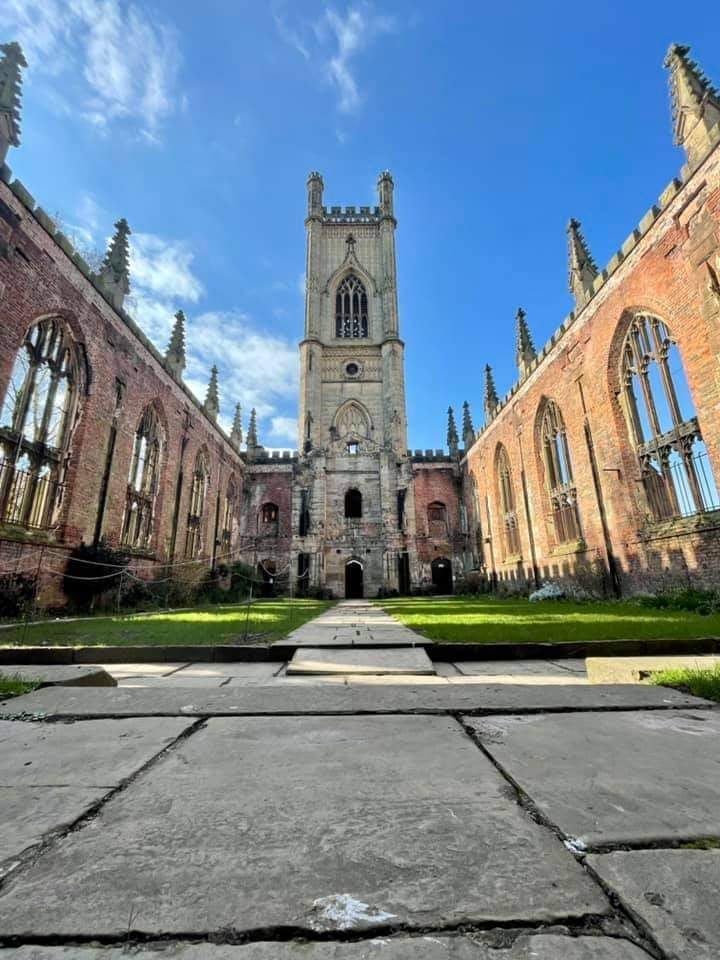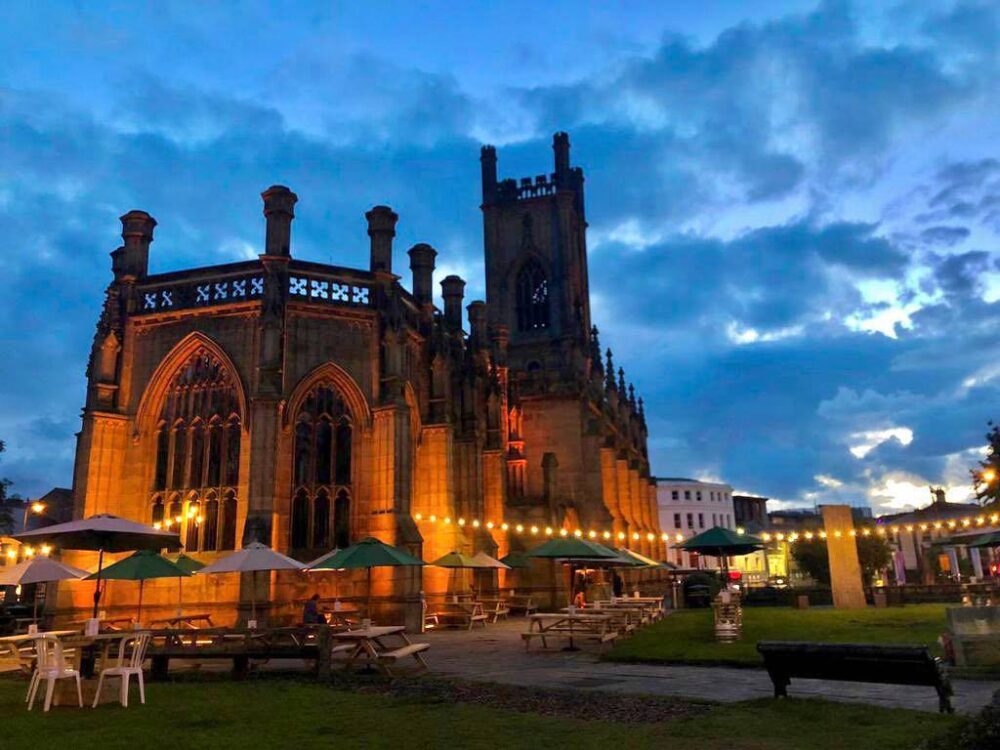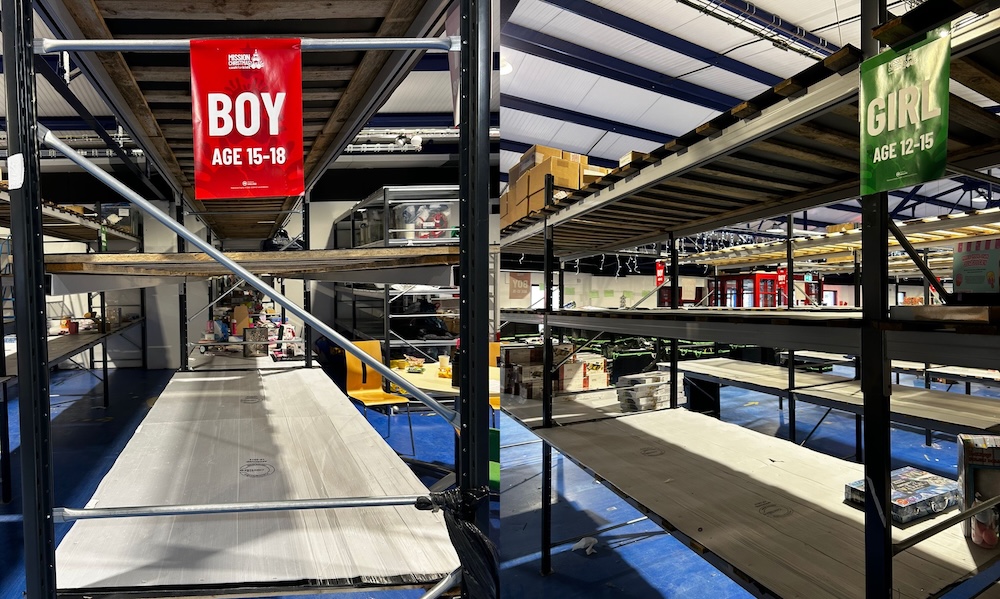
Features
Discover the incredible history of The Bombed Out Church
3 years ago

St. Luke’s Church more affectionately known as “The Bombed Out Church” is one of Liverpool’s most iconic locations.
Standing tall at the top of Bold Street – The Bombed Out Church hosts some fantastic events such as Makers Market, or pop-up cinemas and theatre productions.
It is also one of the prime meeting spots in the city, whether it be for organised protests, or calling a delta at the end of a night out.
Built between 1811 and 1832, St. Luke’s was designed by father and son, John Foster Sr and John Foster Jr. In Addition to being a parish church, it also functioned as a concert hall until 1849.
Bombed and burnt out by an incendiary device, just after midnight on May 6 1941 during the Luftwaffe’s Blitz on Merseyside. The large fire that ensued swept through the building, causing its stained glass to burst from within, its roof to collapse, and several of its bells to cascade down the tower to the ground.
Ultimately, having endured for several days, the blaze left little more than the church’s stonework standing. Only the shell of the building remained. In the aftermath of the war, St. Luke’s was left in its ruined state as a memorial to casualties in the armed forces and the civilian population.

Before the bombing on May 6, 1941, regular worshippers at St Luke’s would have seen two aisles where the grassy floor covers the interior today. There was also stained glass in the windows where now only fragments survive, one of which is Liverpool’s hidden Liver Birds.
Overgrown and inaccessible, the site lay derelict for over 60 years, before being cleared, and transformed by a series of cultural events, reopening the space to the public. From 1952 onwards, The BOC has been categorised as an official Grade II listed building by the National Heritage List for England. Due to its moving history and its looming presence as an example of the German attack, the church has since become a managed ruin and memorial to those lost during the Blitz.
Today we know it as a mainstay of the city centre’s architecture, a place to visit for quirky cultural experiences. Following a series of innovative installations within St Luke’s, it was reopened to the public in 2007, and has since played host to a phenomenal range of arts and cultural events, as well as community and wellbeing activities.

The story of St Luke’s regeneration exemplifies the power of the arts to affect change; organised events onsite allow attendees to relate to this story and become aware of the ways in which art and creative expression can enrich and transform their own lives in turn.
As a Grade II listed building and memorial to the casualties of war, the building also makes a tremendous contribution to Liverpool’s heritage, while standing testament to the fortitude of the city’s community, and in memory those who have lost their lives due to the effects of war.









 Subscribe
Subscribe Follow Us
Follow Us Follow Us
Follow Us Follow Us
Follow Us Follow Us
Follow Us Follow Us
Follow Us











